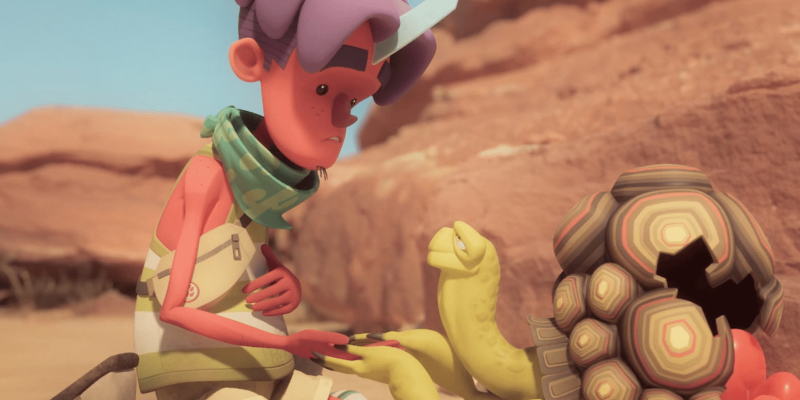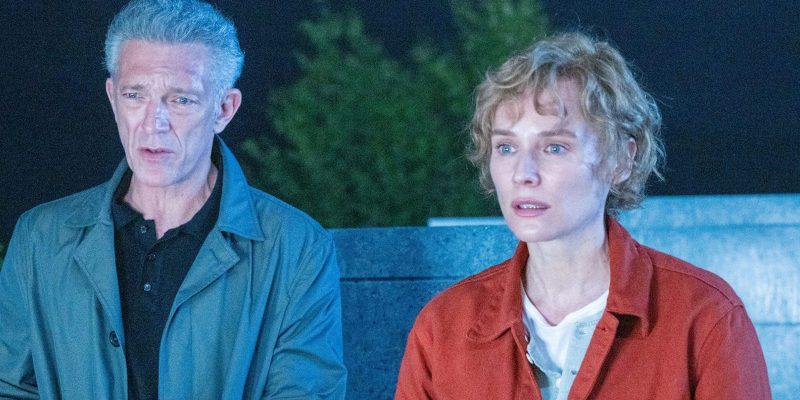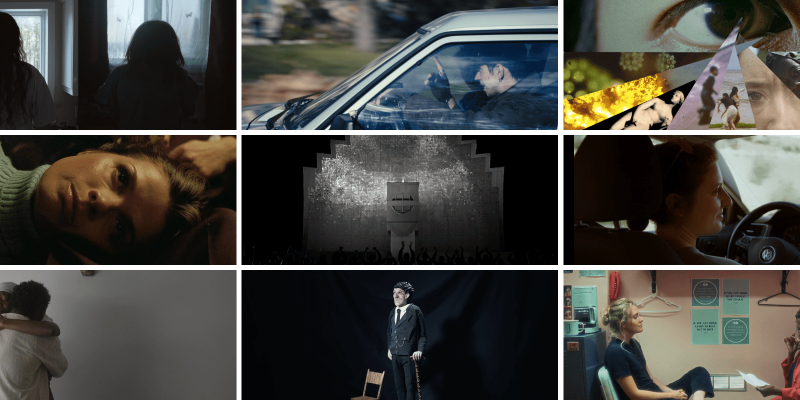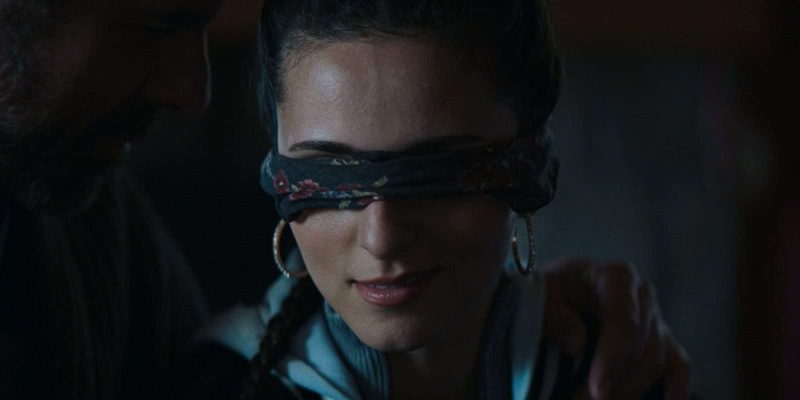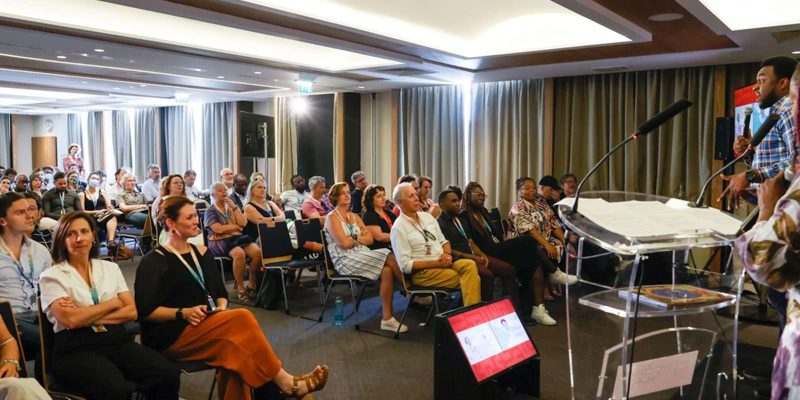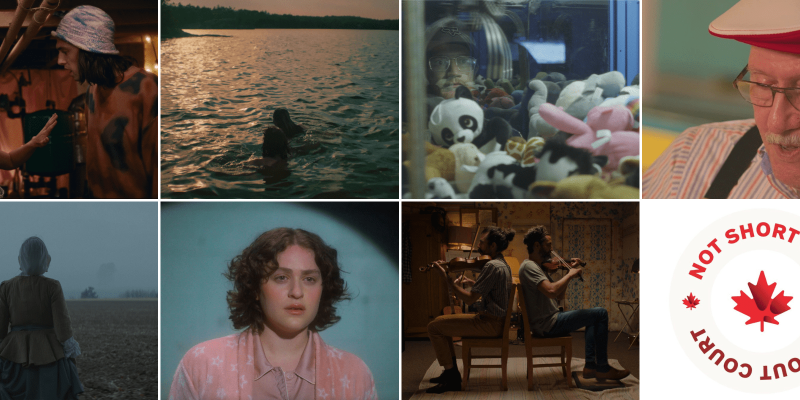I’ve been fortunate to curate two of Catherine Boivin’s films for Telefilm Canada’s Not Short on Talent programme: 6 minutes/km, presented last year at the Cannes Short Film Corner, and Anotc ota ickwaparin akosiin, which just returned from the festival’s 2024 edition. Here’s what I wrote about Boivin’s second short film, which is being distributed by Wapikoni Mobile:
“With a frame split directly down the middle, we see two domestic scenes: Boivin, on one half, doing chores like dishes and laundry; Boivin’s daughter, on the other, playing with her toys and having fun. Atop these images, Boivin has an emotionally honest voiceover in which she addresses her mother; here, with mirrored actions unfolding on both sides of the screen, a remarkable short film is realized.”
Recently, I wrote to Boivin (who replied in French, translated into English), eager to learn how she found herself leaving the town of Odanak (population: < 500) to screen her work in Cannes — not once, but twice:
“I’d already made a film with Wapikoni Mobile”, the Atikamekw Nehirowisiw director and multi-disciplinary artist begins. “At first, I wanted to be a professional make-up and special-effects artist. This in turn led to working as a trainee on an actual film set. But in fact it was also an internship that taught me more about filmmaking. Ultimately, I ended up getting a bachelor’s degree in visual and media arts. I always kept a link open to video editing in my artistic video projects. It was during a stopover in Odanak that I rekindled my dream of working in the film industry.”
Boivin explains that Wapikoni Mobile stopovers are month-long community events where the Wapikoni trailer arrives at a community with everything audiovisual needed to make a film — even post-production assistance from on-site film editors to add any necessary finishing touches. At the end of the month, once the films are done, the community holds screenings to allow everyone to enjoy the work.
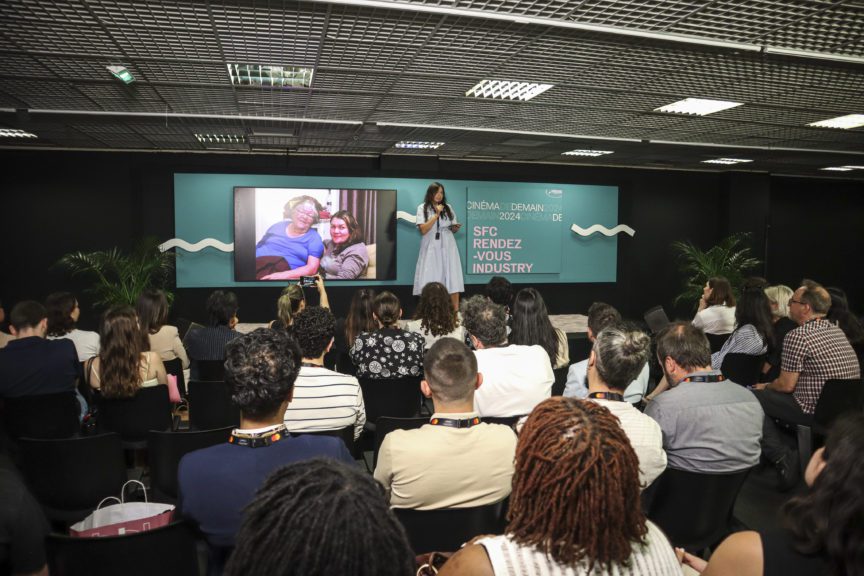
Catherine Boivin presenting at the 2024 Cannes Short Film Market.
“The idea for [this] film came to me while doing housework one day,” Boivin says. “I was thinking about how I was linked to my daughter, to my mother, and my mother’s link to her own mother. The theme of intergenerational trauma often comes up in First Nations communities. I wanted to talk about the path to forgiveness for being at peace with oneself. I was envisioning the film and thinking of a new way to use the split screen. The concept had a specific goal for showing two people going about their daily lives simultaneously. While I already had the idea for the final edit, I still had to think about how I was going to get there. The two characters are on their own, but in the end they become one.”
There’s a moment in Anotc ota ickwaparin akosiin where Boivin addresses the camera directly, but it’s not us she’s speaking to.
“Making the film was a kind of therapy,” she says. “My mother helped in translating the script into Atikamekw Nehirimowin. Letting her see what I was going to say was part of the process, and it worried me at first, because I didn’t want to hurt her feelings, but I could see that it had to be done. My objective was to reach out to as many people as possible. My story could be anyone’s story. Sure it’s an Indigenous story, but it’s also a universal one. Because it speaks to the inner child. At just around five minutes of runtime, Anotc ota ickwaparin akosiin is short — even for a short film. “Simplicity goes a long way,” Boivin adds. “The right balance of words and images can convey an important message.”
Here, that message is one of courage. “My hope is that it will help bring Indigenous and others closer together”, Boivin says, who is also working on a longer film. “I want to encourage more awareness among my Atikamekw Nehirowisiw brothers and sisters so they can speak out freely about the traumas they’ve endured.”


